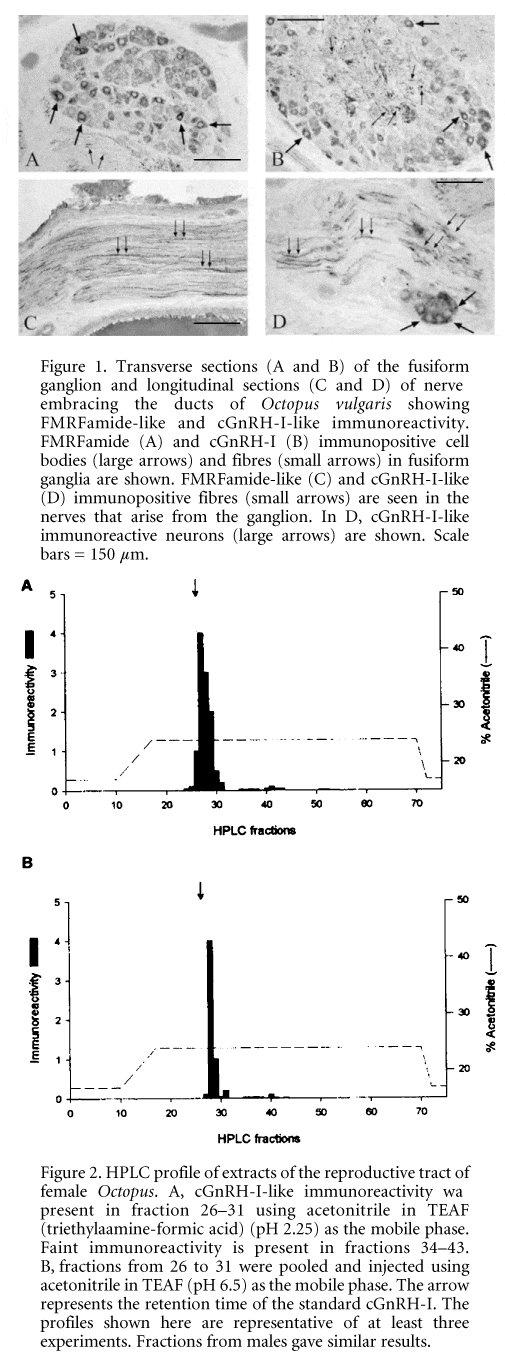In Octopus vulgaris, the endocrine optic glands on the optic tract control the maturation of the gonads (Wells & Wells, 1959). The glands are innervated by the optic gland nerve which originates in the central nervous system (Young, 1971). This nerve provides direct and indirect signals, coming from the centres of integration of chemical, visual and olfactive stimuli, in order to modulate the glandular activity. In these centres, the subpedunculate area and the olfactory and optic lobes, FMRFamide-like and cGnRH-I-like immunoreactivities were detected (Di Cosmo & Di Cristo, 1998). The subpedunculate area seems to be the source of the FMRFamide-like peptide, whereas the posterior olfactory lobule is the source of the GnRH-like peptide. The immunoreactive fibres for both neuropeptides leave their sources and directly enter the optic gland nerve. FMRF-amide and GnRH-immunoreactive nerve endings are present on the glandular cells (Di Cosmo & Di Cristo, 1998).
Here we report the evidence of FMRFamide-like and cGnRH-I-like immunoreactivity in the reproductive tract of both female (n = 3) and male (n = 3) Octopus vulgaris. For experiments, animals were anaesthetised by immersion in 2 % ethanol in seawater and humanely killed by cutting the dorsal aorta. Cell bodies and fibres are immunolocalized in the fusiform ganglion from which the duct nerves that reach the female and male reproductive tracts arise (Young, 1967). FMRFamide-like and cGnRH-I-like immunoreactive nerve endings are present in the oviduct, and in the oviducal gland of the female and in the seminal vesicle of the male. The GnRH-like peptide has been partially characterized by HPLC and MALDI-TOF analyses. The retention of the Octopus GnRH-like peptide is similar to the retention time of the cGnRH-I used as standard. We suggest that FMRFamide-like and GnRH-I-like peptides are involved in the control of gamete transport along the reproductive tract of both sexesand in the secretion of mucus and mucilaginous substances respectively from the oviducal gland and the seminal vesicle. Our data provide further evidence to support the hypothesis of the existence of a central and peripheral peptidergic control of the reproductive behaviour of Octopus vulgaris.
All procedures accord with current National and/or Local guidelines.

